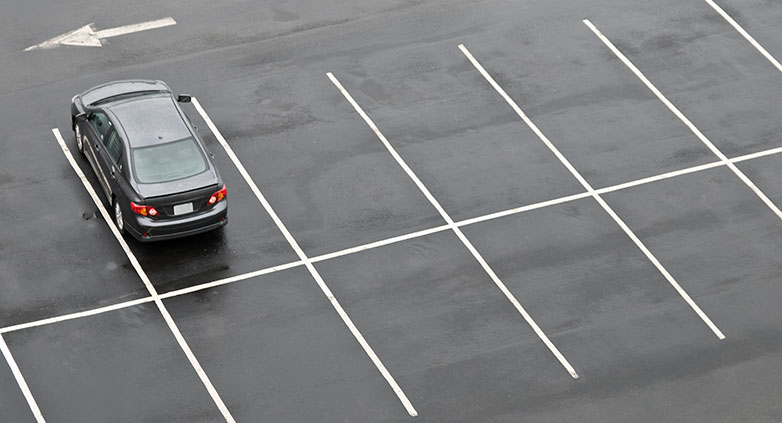Parking Lot Drainage Problems – 9 Issues & Solutions
Parking lot drainage problems often go unnoticed until a heavy rain reveals the significant challenges they pose to businesses and customers alike.
Efficiently addressing parking lot drainage problems is crucial for maintaining your business’s aesthetic appeal and operational safety. Solutions include adding internal curbing, correcting the slope, and installing drains. These methods not only enhance the appearance of your parking area but also prevent costly repairs and ensure customer convenience and safety, especially during adverse weather conditions.
Explore further to learn about the nine most common parking lot drainage problems and how to effectively address them, ensuring your business’s parking area remains safe and welcoming, free from water damage and hindrances for your customers.
9 most common parking lot drainage problems
Effective drainage is crucial for maintaining the integrity and usability of parking lots. However, several issues can compromise this system, leading to a variety of problems that affect both the functionality and longevity of the parking area. Here are the most common drainage issues encountered:
1. Inadequate Slope or Grading
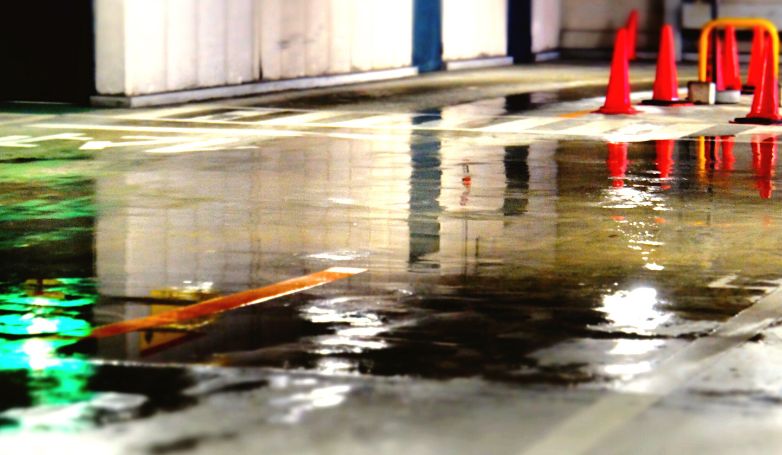
A well-designed slope is vital for efficient water drainage in parking lots. Inadequate slope or improper grading leads to water stagnation, creating risks of surface deterioration and potential safety hazards. Ensuring a correctly angled slope is fundamental to facilitate smooth water runoff and prevent accumulation, thereby extending the lifespan of the parking lot.
2. Clogged or Insufficient Drainage Systems
Drainage systems are crucial for channeling water away from parking surfaces. When these systems become clogged with debris, or if they are insufficiently designed for heavy rainfall, they can lead to water accumulation. This not only poses a flooding risk but also accelerates wear and tear on the parking lot surface, necessitating frequent maintenance.
3. Poorly Designed or Damaged Curbing
Curbing serves as a boundary and a guide for water flow. If curbing is poorly designed, incorrectly installed, or damaged, it can fail to direct water effectively, leading to overflow and adjacent landscape erosion. Regular inspection and repair of curbing are essential to maintain effective water management in parking areas.
4. Ineffective Stormwater Management
Addressing parking lot drainage problems is essential for effective stormwater management. Without proper systems in place, heavy rains can overwhelm the parking area, leading to surface erosion, potential flooding, and long-term structural damage. Implementing comprehensive stormwater solutions is critical for maintaining the integrity of the parking lot and preventing water-related damage.
5. Surface Erosion and Sediment Buildup
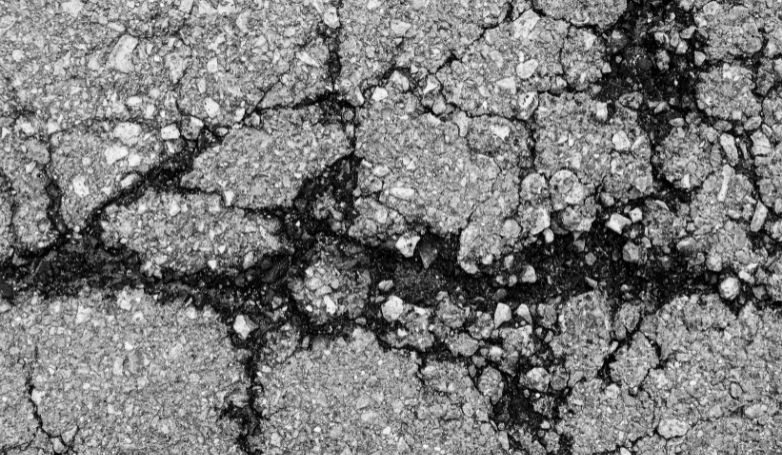
Continuous water flow, especially during heavy rains, can lead to surface erosion, compromising the integrity of the parking lot. This erosion often results in sediment buildup, which can clog drainage systems, further exacerbating water drainage problems. Regular cleaning and maintenance are necessary to prevent these issues.
6. Cracked or Uneven Asphalt Surfaces
Cracks and unevenness in asphalt impede efficient water drainage, leading to water pooling and further surface damage. These imperfections can develop into larger cracks and potholes, presenting safety risks and potentially costly repairs. Regular monitoring and maintenance are crucial to address these issues promptly.
7. Inadequate Catch Basins or Grates
Catch basins and grates are essential for capturing and redirecting water away from the parking surface. If these elements are inadequate or poorly maintained, they can fail to manage water effectively, resulting in persistent puddles and potential slip hazards. Ensuring these components are appropriately sized and regularly maintained is critical for effective drainage.
8. Water Pooling and Standing Puddles
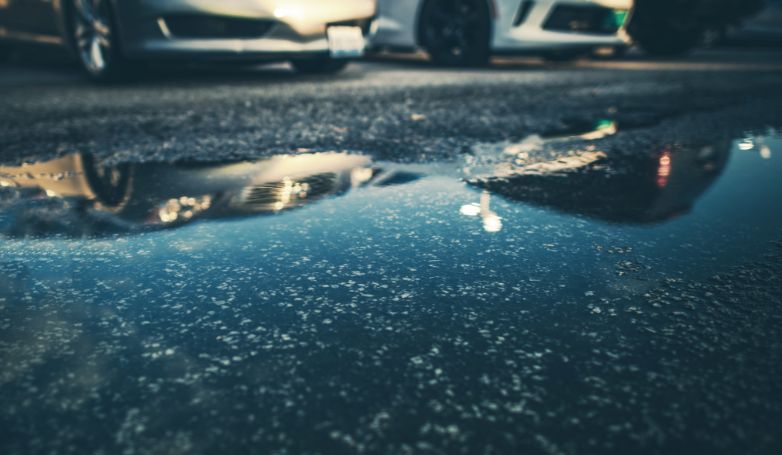
Persistent water pooling and standing puddles are clear indicators of drainage issues. These can lead to slip hazards, vehicle damage, and deterioration of the parking lot’s surface. Addressing the root causes of these puddles, such as poor grading or blocked drainage, is essential for a safe and well-maintained parking area.
9. Subsurface Water Intrusion
Subsurface water intrusion can compromise the foundational integrity of the parking lot. This issue often goes unnoticed until significant damage has occurred. It can lead to sinkholes, subsidence, and extensive structural damage, necessitating costly repairs. Effective surface drainage and waterproofing measures are key to preventing these severe issues.
9 Ways to fix the most common parking lot drainage problems
When evaluating solutions for parking lot drainage problems, you may need to consider one or a combination of these strategies. The choice depends on the location of your parking lot and the extent of the damage caused by poor drainage over the years. Effectively addressing these issues is crucial to prevent further deterioration and maintain the long-term functionality of the parking area.
Be sure to consult a professional with knowledge of your specific situation, and determine which drainage solution(s) is right for you.
1. Add Internal Curbs
Adding curbing within the boundaries can help redirect water flow through the asphalt surface. This approach effectively limits standing water, guiding it towards the perimeter where it can naturally seep into the ground.
Additionally, curbs offer aesthetic benefits. They provide opportunities for light landscaping, enhancing the overall appearance of your business area and lending it a more professional look.
2. Correct The Parking Lot Slope
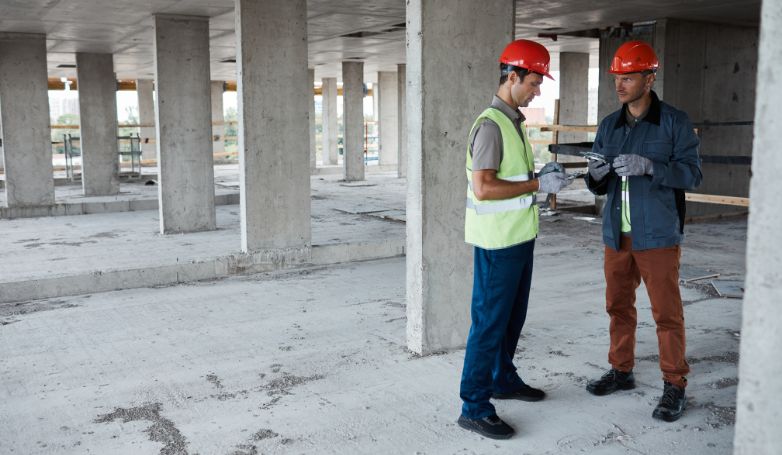
Water pooling signifies that the area either lacks a proper slope or is sloped incorrectly. To remedy this, adjusting the slope is necessary so that the area gradually inclines towards the lot’s perimeter, ensuring efficient water runoff and preventing accumulation.
This will help prevent any water from pooling on the asphalt by directing it to flow off the premises instead.
To most effectively drain water off your parking lot, the slope of the asphalt should be between 2% and 5%.
3. Install Drainage Ditches And Grates
Another effective solution for drainage issues is the addition of runoff drains and trenches throughout the parking lot. This approach is particularly beneficial for larger spaces, where redirecting water effectively can pose a significant challenge.
By installing drainage ditches and grates in your parking lot, you’ll ensure the water is directed out of your parking area and into a sewer or other municipal waterway.
To make sure the standing water runs into drainage gutters, the grade of the drainage grate should be at least 3% but preferably closer to 5%.
4. Standard Catch Basins
Standard catch basins play a crucial role in mitigating parking lot drainage problems and ensuring effective water management. These basins are designed to capture and redirect surface water, making them particularly vital in areas prone to frequent heavy rain. Their strategic placement allows them to intercept water at key points, effectively reducing pooling and contributing to a drier, safer parking surface.
5. Concrete-Encased Drainage Basins
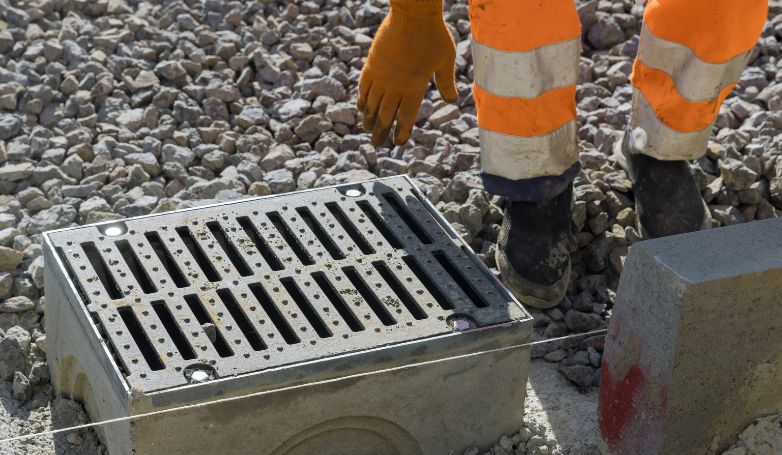
Concrete-encased drainage basins offer enhanced durability and longevity, especially suitable for high-traffic commercial parking lots. These robust structures withstand heavy loads and frequent use, efficiently managing large volumes of water and mitigating the risk of flooding and surface damage.
6. Trench Drainage Basins
Trench drainage basins are an excellent solution for extensive water management in vast parking areas. Their design allows for the effective channeling of water over large surfaces, significantly reducing water pooling and the risk of flooding, and ensuring a safe and dry parking environment.
7. French Drains
French drains are an effective subsurface drainage solution, ideal for areas with underground water issues. These drains redirect water away from the parking lot’s foundation, protecting the structural integrity and preventing water-related damage such as sinking or cracking of the asphalt.
8. Trench Drain
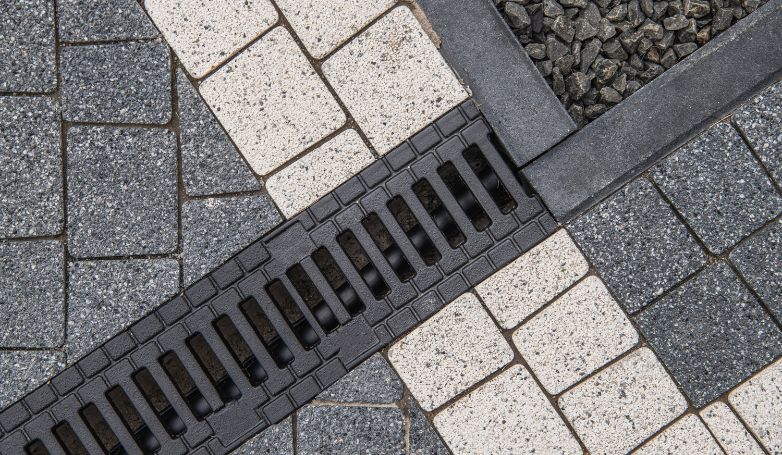
Trench drains are highly effective in managing water across elongated stretches. They create a continuous channel, facilitating efficient drainage over expansive areas. This system plays a crucial role in preventing water accumulation, thereby maintaining the overall health and integrity of the area.
9. Slot Drain
Slot drains provide an aesthetically pleasing and efficient drainage solution where appearance is paramount. Their slim profile blends seamlessly with the surface, ensuring effective water management while maintaining the area’s visual appeal.
By tailoring these solutions to specific requirements, you can effectively resolve parking lot drainage issues, ensuring safety, functionality, and visual appeal for your business’s outdoor space.
What Causes Parking Lot Drainage Problems?
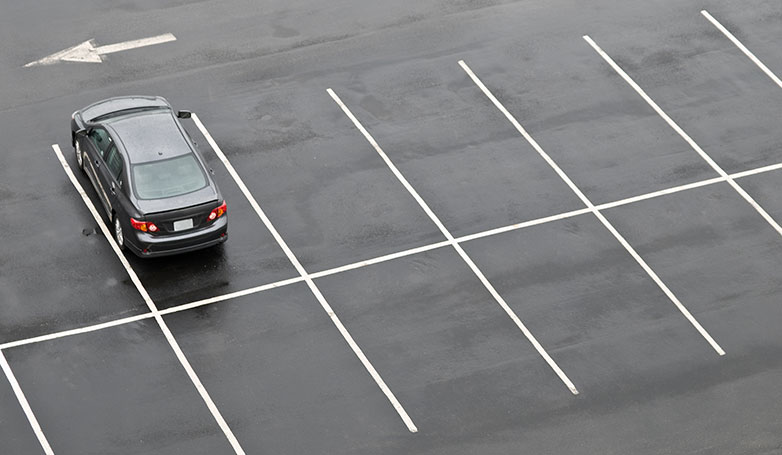
Uneven ground is generally the culprit behind poor parking lot drainage. When the ground slopes unevenly in your parking lot, rainwater and water runoff follows the path of the slope, which causes pooling.
Sometimes this can be the fault of a previous paver’s oversights, but more often than not it’s simple wear and tear on the asphalt over the years or an issue with the evenness of the underlying earth.
Regardless of the reason, it’s important to identify and resolve drainage issues as soon as possible.
How Do You Identify Drainage Problems?
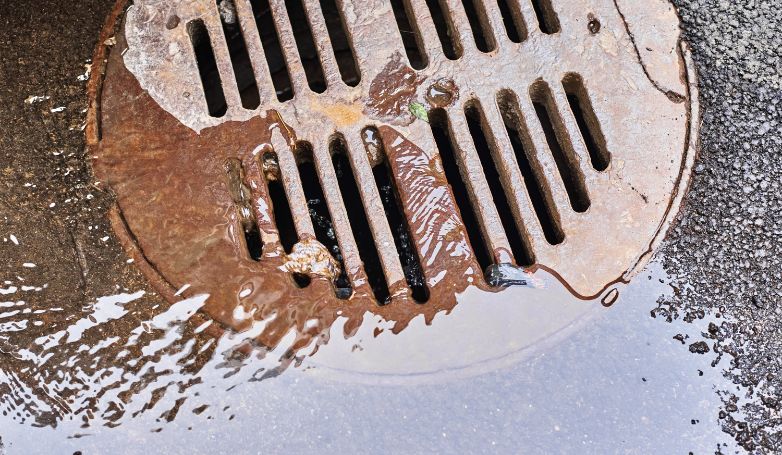
The telltale signs of poor parking lot drainage are:
- Pooling water in your parking lot
- Leftover debris like sand or pebbles in random places on the pavement
- Residual, dusty-looking patches throughout the lot where the pooling water has evaporated
If you notice one or more of these signs occurring on your asphalt, it’s highly likely that you have parking lot drainage problems. To prevent problems with your asphalt in the future, you should start preparing to remedy the situation.
Indications of Existing Damage Due to Poor Parking Lot Drainage
Unfortunately, it’s possible that the poor drainage is already affecting your lot. The following are signs that the standing water is already causing damage to your asphalt:
- You see cracks in the asphalt surface. This is caused when water puts pressure on the asphalt.
- The top layer of asphalt has started to “ravel.” This happens when water erodes the top layer of your parking lot over time.
- The asphalt looks like it’s bleeding. This means that the asphalt binding agent has risen to the surface of the pavement, indicating aggregate separation.
- Frequently traveled sections of the lot are starting to rut. This looks like the asphalt is sinking in slightly on itself, and will occur in sections of the lot where people drive most often. Commonly, asphalt rutting looks like tire impressions.
If you notice these issues and warning signs, be sure to speak with a parking lot drainage expert as soon as possible. Not taking action could result in severe consequences, which we’ll explain in detail next.
What Are The Consequences of Not Having Proper Drainage?
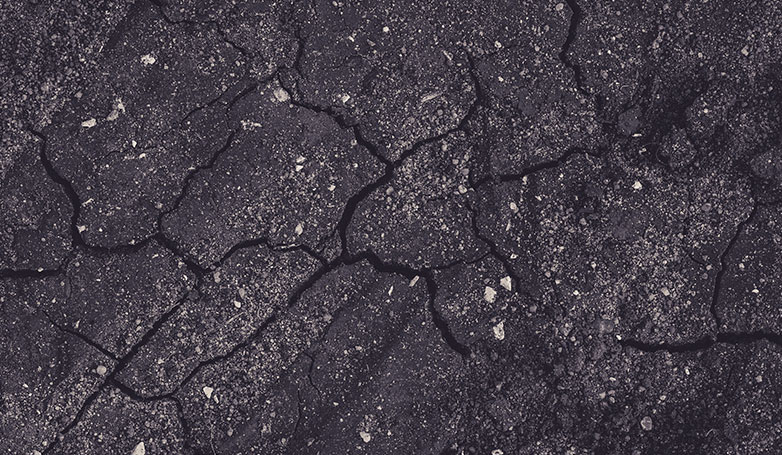
If your parking lot is retaining water, it’s best to deal with the situation sooner, rather than later.
If the lot is part of a newly purchased property, you might not know how long drainage has been an issue. Speak with a professional to evaluate the extent of the potential damage and get a quote for what a drainage solution might cost.
As mentioned earlier, there are various reasons why ensuring effective drainage is crucial for your parking lot. When these considerations haven’t been integrated into the initial design, you may encounter both direct and indirect consequences.
In general, we can break these consequences down into two categories: damages and expenses.
Damages From Parking Lot Drainage Problems
A good asphalt pavement will hold up for 12-15 years before it needs maintenance. However, if your pavement collects a lot of standing water due to poor drainage, that timeframe could be significantly reduced.
Standing water can seep into and exacerbate existing cracks and holes in your asphalt. Such damage can occur both during the paving process, as well as long after its completion.
Damages Possible After Paving
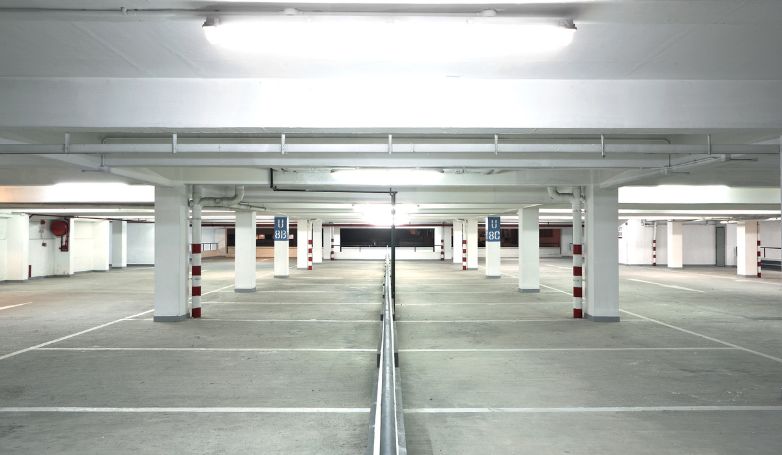
While addressing any potential drainage problems before your lot is constructed is important, you won’t be out of the woods just because the asphalt has been laid.
If pooling water recurs frequently or is left unattended for extended periods of time, the water can seep down to the pavement base, causing long-term damage. Once the base course of your parking lot is damaged, its ability to withstand regular traffic will decrease, causing further potholes and cracks.
Not only do such eyesores look unseemly to customers, but they can be expensive to fix. This brings us to our second category of poor drainage consequences: the price to fix them.
Warning Signs Before Paving
Before construction and paving begin on your parking lot, you can assess how likely your lot is to encounter drainage problems by looking at the would-be lot’s location. If your parking lot is located at the base of a hill or on low-lying land, it’s likely that you’ll have drainage problems.
Additionally, aside from problems caused directly by flooding, land that has experienced heavy water retention over the years is likely to have less stable soil, which can indirectly impact your parking lot over time. Unstable soil has a tendency to settle and shift over the years, which could result in uneven dips in your asphalt, even if the initial paving was done correctly.
While relocating the site may not be feasible, early awareness of this information will help you determine how crucial drainage solutions will be for you and your customers.
Cost of Parking Lot Drainage Problems
| Category | Details | Estimated Cost Range |
|---|---|---|
| Drainage Pipes | Type, size, quantity | $500 – $2,000 |
| Gravel or Aggregate | For permeable surfaces or drainage | $300 – $1,200 |
| Catch Basins | New/additional units | $200 – $800 per unit |
| Geotextile Fabric | For soil erosion control and drainage | $0.50 – $2.00 per square foot |
| Concrete or Asphalt | For repairs or reconstruction | $3 – $10 per square foot |
| Excavation and Grading | Site preparation and terrain reshaping | $1,500 – $5,000 |
| Installation of Drainage | Installing pipes, basins, etc. | $1,000 – $4,000 |
| Pavement Repair | Removal and replacement of existing pavement | $2,000 – $10,000 |
| Professional Fees | Engineering/design consultation and planning | $500 – $3,000 |
Ignoring parking lot drainage issues can lead to substantial financial implications. Simple asphalt repairs at a residential property can range from $979 to $3,521, but the costs for commercial parking lots are significantly higher due to larger areas and heavier usage.
Commercial pavers often charge based on the area that requires repaving. With average repaving costs ranging from $3 to $10 per square foot, as per the detailed cost breakdown provided earlier, a large parking lot with extensive drainage-related damage can incur expenses well over $10,000.
A 2019 estimate suggests that repairing an entire asphalt lot plagued with drainage issues could potentially cost thousands of dollars. Additionally, the indirect costs associated with an unattractive and poorly maintained parking lot can be detrimental to businesses. For instance, a 2017 INRIX report highlighted that 40% of U.S. drivers avoid locations known for parking difficulties.
To prevent drainage issues from escalating into costly repairs, timely and efficient improvements in your parking lot’s drainage system are crucial. Implementing solutions such as proper grading, installation of adequate drainage systems, and regular maintenance can save significant expenses in the long run.
Why You Should Fix Your Drainage Problems
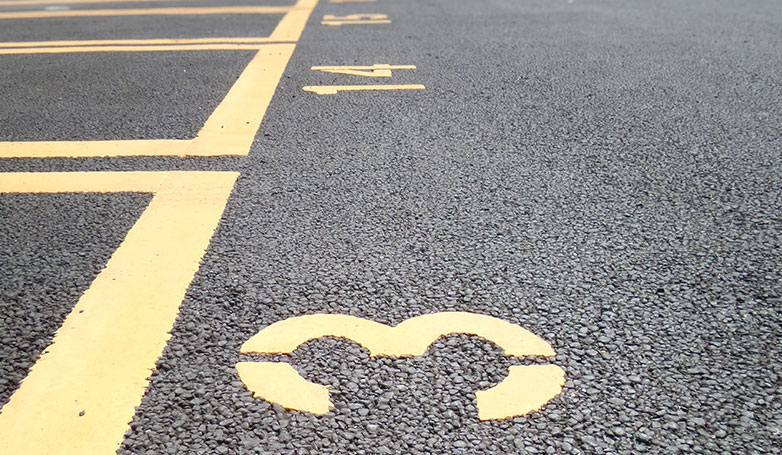
Your customers may not actively notice an area that has no problems, but you can be sure that they’ll notice if it’s full of cracks, potholes, and standing water.
Presenting a smooth, evenly paved surface to your customers starts off their experience with your business on the right foot.
By identifying and addressing your drainage problems, you can ensure that your customers have a good experience with your brand from the moment they pull up in front of your building.
Not only will a consistently professional experience encourage patrons to become returning customers, but having good parking lot drainage will also save you future headaches and maintenance costs.
FAQs about Parking Lot Drainage Problems
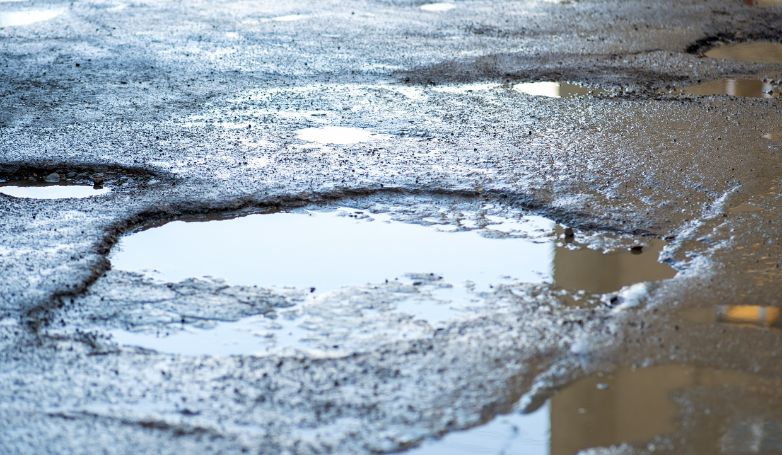
Parking lot drainage is a crucial aspect of maintaining the functionality and safety of any commercial or public space. Understanding common issues and their solutions helps in effectively managing these areas. Here are some frequently asked questions that shed light on common drainage concerns:
Why Do Parking Lots Tend to Have a Lot of Puddles And Standing Water?
In short, it all comes down to poor water drainage.
Have you ever pulled up to your grocery store, dentist’s office or local gym on a rainy day, only to find the entire lot flooded with standing water? While this may initially seem like a minor inconvenience, the truth is that all that water is bad for business.
Unfortunately, many businesses have these parking lot drainage problems, and many consumers have experienced something like this at one location or another.
Why Parking Lot Drainage Matters
Adequate drainage in your parking lot is important because it prevents water from pooling on the pavement. Having a water-free parking lot:
- Ensures your parking lot asphalt lasts longer
- Makes a good first impression on your customers
- Keeps parking spaces free from puddles so employees and customers can park easily
- Keeps customers and employees safe from potential slips and falls
- Prevents unsanitary standing water from lingering in your parking lot
- Shows detailed consideration and planning on your part
Having a properly draining parking lot will not only keep your business property in good condition, but will also enhance opinion about your business in your customers’ and employees’ eyes.
What’s more, not addressing potential drainage problems as soon as you notice them can lead to expensive, time-consuming remedial work later. The sooner you resolve your drainage problems, the better off your business will be.
What is the slope for parking lot drainage?
The recommended slope for parking lot drainage typically ranges between 2% and 5%. This gradient is sufficient to enable water runoff without causing excessive water flow that might lead to erosion or pose a hazard. The precise slope depends on the specific layout and requirements of the parking lot, including local climate conditions and expected rainfall intensity.
What is the runoff coefficient for a parking lot?
The runoff coefficient for a parking lot varies based on the surface material and design. Generally, for asphalt or concrete parking lots, the coefficient is high, typically in the range of 0.7 to 0.9. This indicates that a large percentage of rainfall becomes surface runoff, as these materials do not allow significant water infiltration. The exact coefficient can be influenced by factors such as the lot’s age, condition, and any permeable paving materials used.
Improve Your Parking Lot Drainage Problems Before They Get Worse
Poor drainage in parking lots is a compounding problem. That is, the damage caused by your drainage issues will only continue to get worse until you resolve them.
Now that you know the ins and outs of how to identify drainage issues, what causes them and what solutions you have at your disposal, get in touch with one of our experts today to stop further water damage before it starts.
Your customers and staff will thank you.

